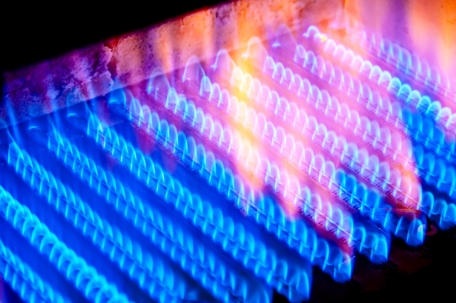If you’re like most U.S. homeowners, your home’s heating system includes a unit called a furnace. Different furnace types will use various fuels (like natural gas, oil, propane, or electricity) to create heat and warm up your home. But while all furnaces have the same essential task, not all furnaces produce the “silent killer,” carbon monoxide.
Below, we’ll answer some frequently asked questions we get from customers about furnaces and carbon monoxide so that you can avoid health and safety issues.
1. Does my furnace produce carbon monoxide?
Any furnace that burns fuel produces carbon monoxide as a byproduct. This is the same for any appliance in your home that burns fuel, such as a gas range. Therefore, if your furnace uses natural gas, propane, or oil to make heat, your furnace creates carbon monoxide. Electric furnaces do not create carbon monoxide.
2. Where does the carbon monoxide in my furnace go?
When everything is functioning properly in your furnace, the carbon monoxide it creates never enters the air circulating through your home. Your breathing air and the toxic flue gases made by your furnace are separated by your furnace’s heat exchanger.
The heat exchanger is a metallic wall or metal tubing, depending on your furnace model. As your furnace burns fuel, the heat exchanger gets hot. It transfers that heat to your indoor air, all the while preventing the bad flue gases from mixing with your indoor air. Instead, the flue gases exit your home through a flue pipe, where they can disperse outdoors.
3. How can I avoid a dangerous carbon monoxide situation with my furnace?
Carbon monoxide can become a problem if your furnace develops cracks in the heat exchanger. When heat exchangers rust, they become brittle. As they heat up and expand, cracks can start forming in the rusty metal, which allow carbon monoxide to leak through.
The best way to avoid this issue is to get your furnace professionally serviced by an HVAC technician once a year in the fall. Among other things, the technician will inspect your furnace’s gas pressure. Excess condensation (which leads to rust) tends to be a problem in furnaces with gas pressure that’s too low. By adjusting your furnace’s gas pressure, your technician can help you avoid a rusty heat exchanger and other problems created by moisture in your system.
We also recommend equipping your home with carbon monoxide detectors and placing them as directed by the EPA. If the detector requires a battery, replace it twice a year—every time we “spring forward” or “fall back” for Daylight Saving Time is a good way to remember.
In need of reliable heating services in Dallas? Contact Rescue Air and Plumbing at (972) 201-3253 today.

